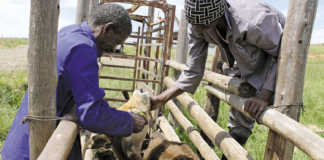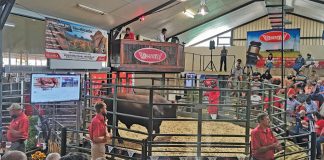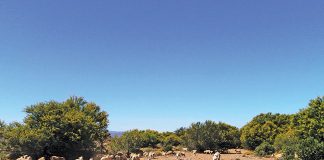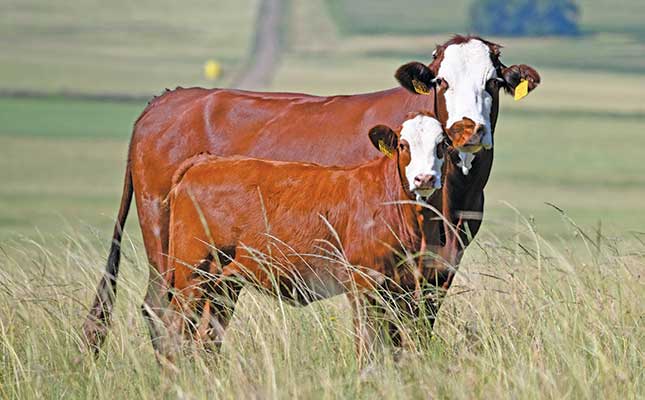
The medium-framed Braford was first developed in Florida in the US in 1947, and is a cross between Hereford and Brahman. As such, the breed demonstrates characteristics and traits associated with the Hereford and Brahman.
The breed was initially developed for more efficient beef production. However, the first offspring of this cross could not adapt adequately to the Florida weather, and Partin and Hudgins Breeding thus continued the development of the breed by experimenting with various Brahman-Hereford-cross bulls. Eventually, the Braford was developed, producing calves that could adapt easily to the Florida weather and that yielded high-quality meat.
Thus, the foundation herd of the Braford was born. The Hereford was used as it was one of the most popular breeds in the world in terms of numbers (and thus there was a large genetic pool from which to choose), as well as for its fertility and meat quality. The Brahman was chosen for its outstanding longevity and mothering ability.
Adams Ranch Brafords was also essential in developing the breed as it is known today. The ranch based bull selection on weaning and yearling weights, and allowed natural selection to eliminate calving difficulties.
While the American Braford may be the best-known lineage of modern-day Brafords, the Australian Braford was developed around the same time from a separate bloodline. The Australian Braford Society was founded in 1962, while the International Braford Association (of the US) was founded in 1969.
The modern-day Australian and American Brafords both comprise around 37,5% Brahman and 62,5% Hereford genetics.
Braford in South Africa
The South African Braford was independently developed in the 1970s, according to the Braford Cattle Breeders’ Society of South Africa (SA Braford). Flip de Jager of Ladysmith and Naudé Bremer of Rosendal used registered Hereford and Brahman cattle in their breeding programmes to develop a South African Braford lineage.
During the 1980s, John Park, Johan Meaker, Walter Thiële and Wessel Wessels also became involved in the development of the breed in South Africa.
In 1997, the South African Braford was officially registered as a developing breed with SA Stud Book. It exhibits traits similar to those of the American and Australian Brafords, and is especially renowned for its early maturity, exceptional maternal ability and high fertility.
The South African Braford also excels under intensive or extensive production, and shows demonstrably high efficiency on the veld and in the feedlot. It also has longevity and shows resistance to heat and insects, inherited from the Brahman, and thus performs particularly well in warmer climates. It also has hooded eyes and good pigmentation, which indicates resistance to cancer, pinkeye and blight.
South African Brafords are well muscled and produce a good dressing percentage, with little waste. SA Braford is a member of the World Braford Confederation, which also includes Australia, the US, America, Uruguay, Brazil and Paraguay. This speaks to the breed’s adaptability across climatic conditions.
The Braford is similar in shape and size to the Hereford, and has a white underbelly, head and feet. However, it is stockier than the Hereford, most likely due to traits passed on by the Brahman.
In a crossbreeding programme, Braford bulls are often used to improve maternal ability and fertility in a cowherd.
Producing Brafords
There are three methods recommended by SA Braford to produce the South African Braford through a crossbreeding programme:
- In the first method (see Table 1), a Hereford cow is mated to a Brahman bull to produce a calf that is 50% Hereford and 50% Brahman in terms of its genetic make-up. If this offspring is a heifer, she is mated to a full Brahman bull to produce a calf that is 25% Hereford and 75% Brahman. This calf is then mated to a full Hereford bull to finally produce a calf that is 62,5% Hereford and 37,5% Brahman.
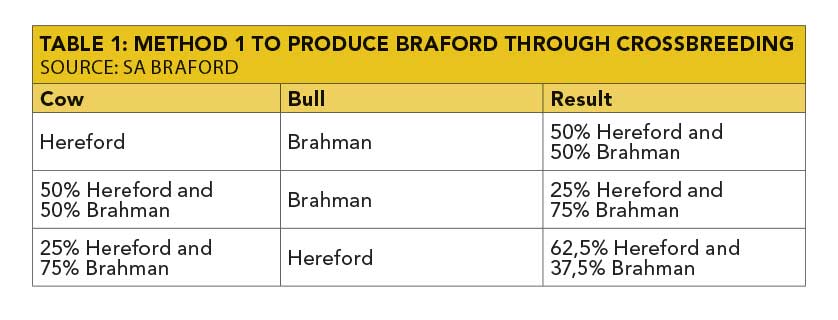
- In the second method (see Table 2), a full Hereford cow is mated to a full Brahman bull to produce a 50:50 Hereford-Brahman crossbreed. This calf is then mated to a Hereford to produce a calf with 75% Hereford and 25% Brahman genetics. This calf is then mated to a Brahman to produce a calf with 37,5% Hereford and 62,5% Brahman genetics.
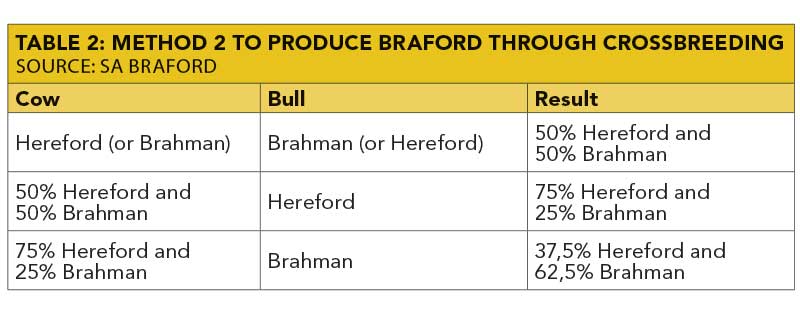
- In the third method (see Table 3), a meat-race breed (it may not be black) is mated to a Braford bull to produce a calf of 50% other and 50% Braford genetics. This calf is then mated to a Braford to produce a calf with 25% Other and 75% Braford genetics. This offspring is then mated to a Braford to produce offspring with 12,5% other and 87,5% Braford genetics. Finally, this calf is mated to a Braford to produce offspring with 6,25% other and 93,75% Braford genetics.
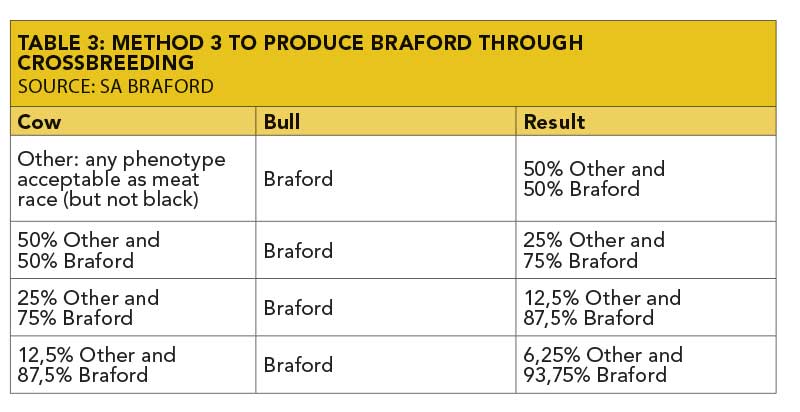
Phone the Braford Cattle Breeders’ Society of South Africa on 051 446 0580.










